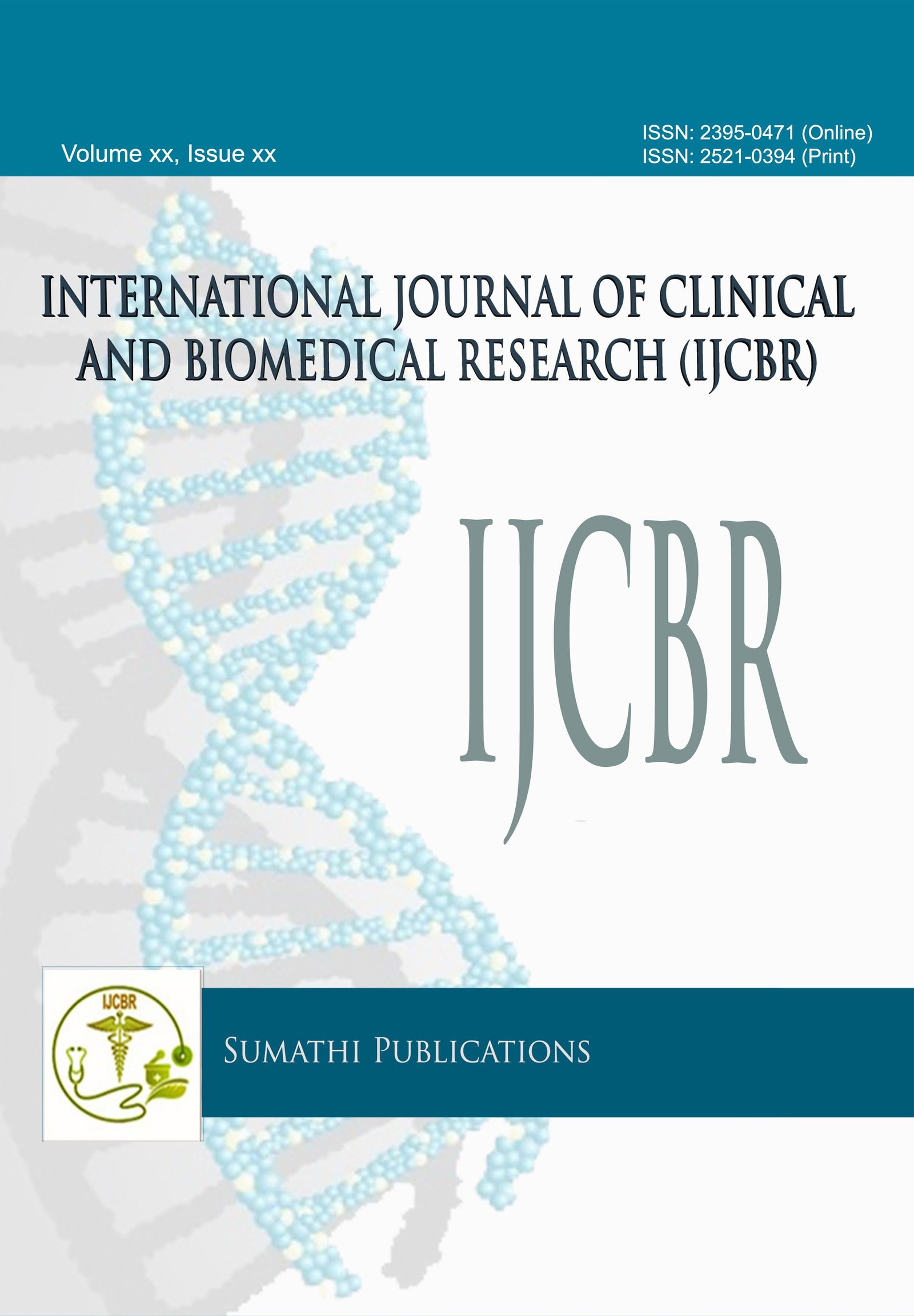BACTERIOLOGICAL PROFILE AND ANTIMICROBIAL SUSCEPTIBILITY PATTERN IN INTENSIVE CARE UNIT OF TERTIARY CARE HOSPITAL, AURANGABAD.
DOI:
https://doi.org/10.5455/ijcbr.2017.33.08Abstract
Introduction: Multidrug resistant nosocomial infections are one of the leading causes of morbidity and mortality in hospitalized patients especially the critically ill patients in the intensive care unit (ICU), where a large number of drugs are administered to the patient which in turn leads to the generation of antibiotic resistant pathogens. Method: Over a period 12 months clinical samples (blood, urine, pus/ wound swabs, respiratory secretions etc) from patient admitted in ICU were processed according to the standard microbiologic methods, and their antimicrobial testing was performed using disk diffusion method. Results: A total of 464 samples, 164 (35.34%) were culture positive in which 133 (81.1%) samples were monomicrobial and 31(63) (18.9%) samples were polymicrobial. Out of 196 isolates were obtained, 127 isolates were Gram negative and 69 isolates were Gram positive organisms. The most common isolate was S. aureus (29.1%) and Klebsiella spp (26%) followed by E.coli (17.3%), Pseudomonas spp (13.8%), Streptococcus spp (5.1%), Acinetobacter spp (4.1%), Citrobacter (2.6%), Proteus Spp (1%) and Coagulase Negative Staphylococcus (1%). Vancomycin and linazolid is more effect against the Gram positive organisms. For Gram negative organism's carbapenems remain the drug of choice followed by amikacin. Conclusion: Institutional antimicrobial surveillance and proper infection control practices are essential to prevent and control multi drug resistant bugs in ICUs and hospital.
KEY WORDS: Bacteriological profile; Antimicrobial profile; Intensive Care Unit infections; Nosocomial Infections.
Downloads
Downloads
Published
Issue
Section
License
The journal allows the author(s) to hold the copyright without restrictions and will retain publishing rights without restrictions.
The submitted papers are assumed to contain no proprietary material unprotected by patent or patent application; responsibility for technical content and for protection of proprietary material rests solely with the author(s) and their organizations and is not the responsibility of the journal. The main (first/corresponding) author is responsible for ensuring that the article has been seen and approved by all the other authors. It is the responsibility of the author to obtain all necessary copyright release permissions for the use of any copyrighted materials in the manuscript prior to the submission.
What are my rights as an author?
It is important to check the policy for the journal to which you are submitting or publishing to establish your rights as
Author. Journal's standard policies allow the following re-use rights:
- The journal allows the author(s) to hold the copyright without restrictions.
- The journal allows the author(s) to obtain publishing rights without restrictions.
- You may do whatever you wish with the version of the article you submitted to the journal.
- Once the article has been accepted for publication, you may post the accepted version of the article on your own personal website, your department's website or the repository of your institution without any restrictions.
- You may not post the accepted version of the article in any repository other than those listed above (i.e. you may not deposit in the repository of another institution or a subject-matter repository) until 12 months after publication of the article in the journal.
- You may use the published article for your own teaching needs or to supply on an individual basis to research colleagues, provided that such supply is not for commercial purposes.









